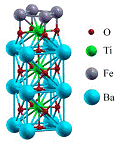Department of Physics and Astronomy: Publications and Other Research
Date of this Version
10-5-2018
Citation
Physical Review B – Rapid Communications 98, 161104(R) (2018).
DOI: 10.1103/PhysRevB.98.161104
Abstract
Nodal-line semimetals are characterized by symmetry-protected band crossing lines and are expected to exhibit nontrivial electronic properties. Connections of the multiple nodal lines, resulting in nodal nets, chains, or links, are envisioned to produce even more exotic quantum states. In this work, we propose a feasible approach to realize tunable nodal-line connections in real materials. We show that certain space group symmetries support the coexistence of the planar symmetry-enforced and accidental nodal lines, which are robust to spin-orbit coupling and can be tailored into intricate patterns by chemical substitution, pressure, or strain. Based on first-principles calculations, we identify nonsymmorphic centrosymmetric quasi-one-dimensional compounds, K2SnBi and MX3 (M = Ti, Zr, Hf and X = Cl, Br, I), as materials hosting such tunable two-dimensional (2D) Dirac nodal nets. Unique Landau levels are predicted for the nodal-line semimetals with the 2D Dirac nodal nets. Our results provide a viable approach to realize the novel physics of the nodal-line connections in practice.


Comments
Copyright 2018 American Physical Society. Used by permission.